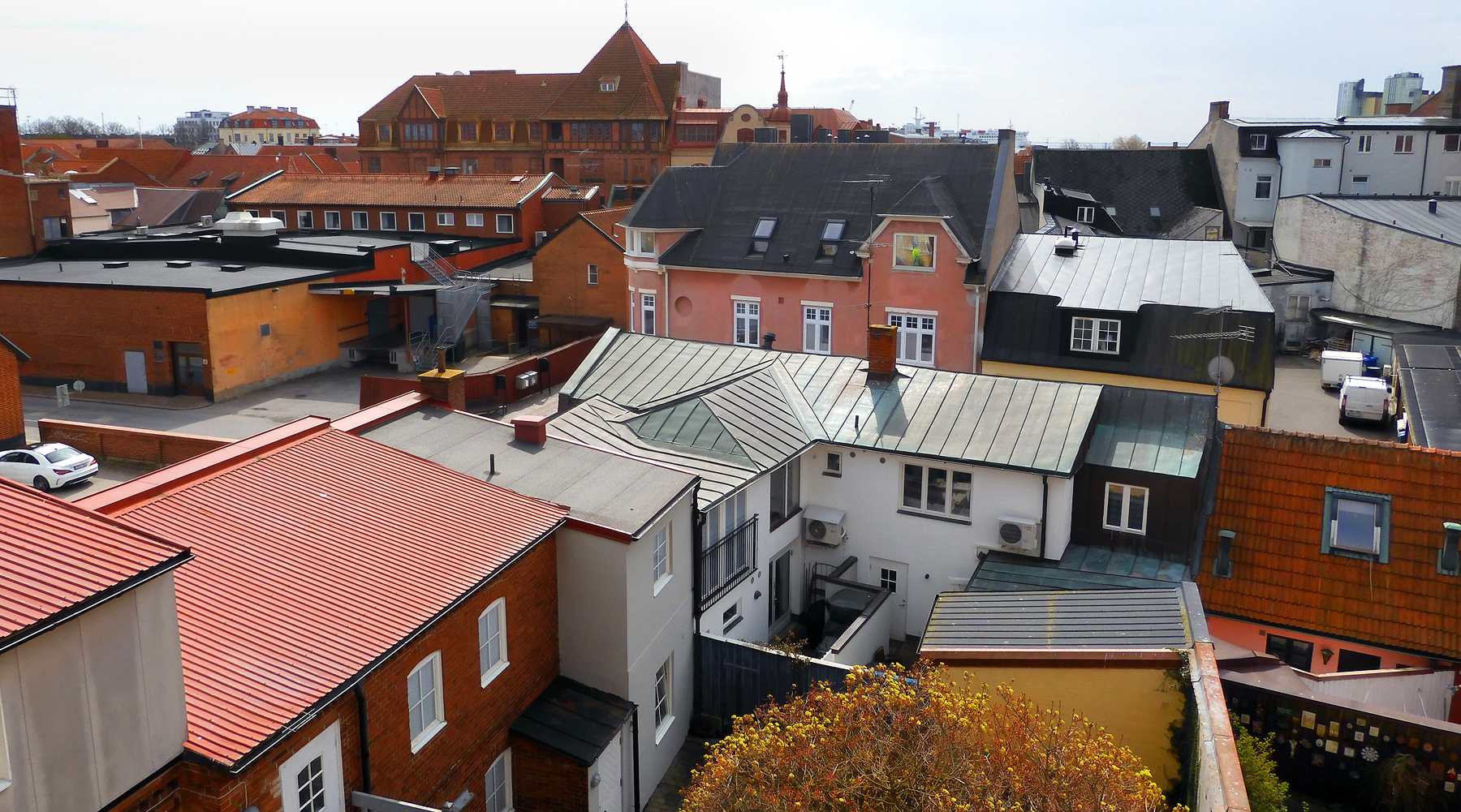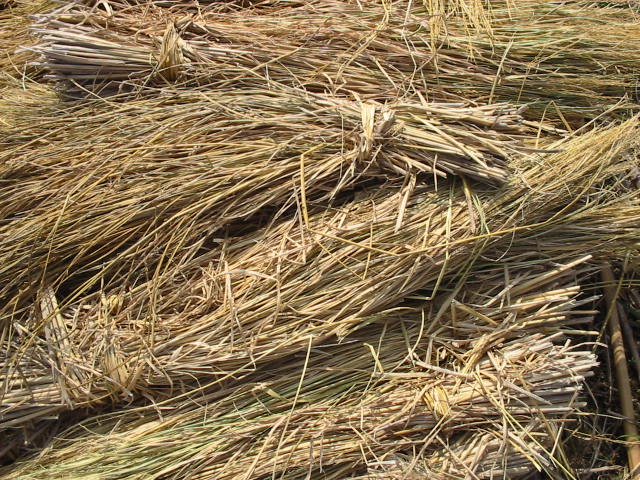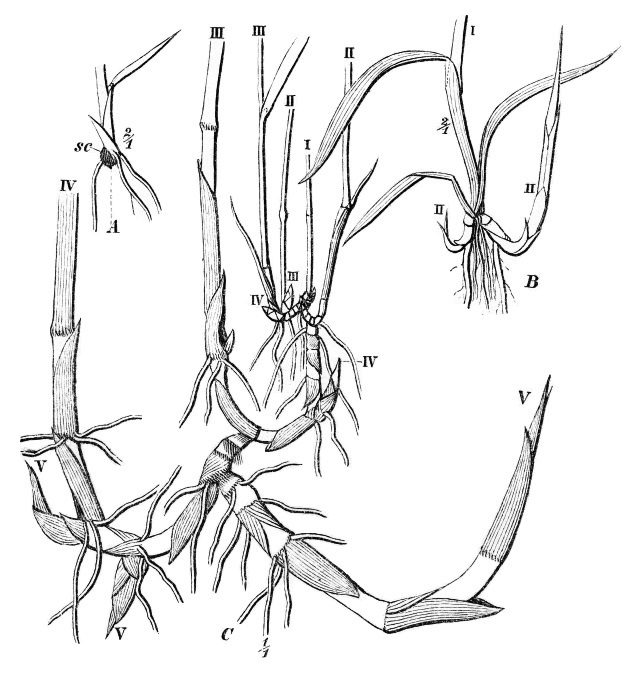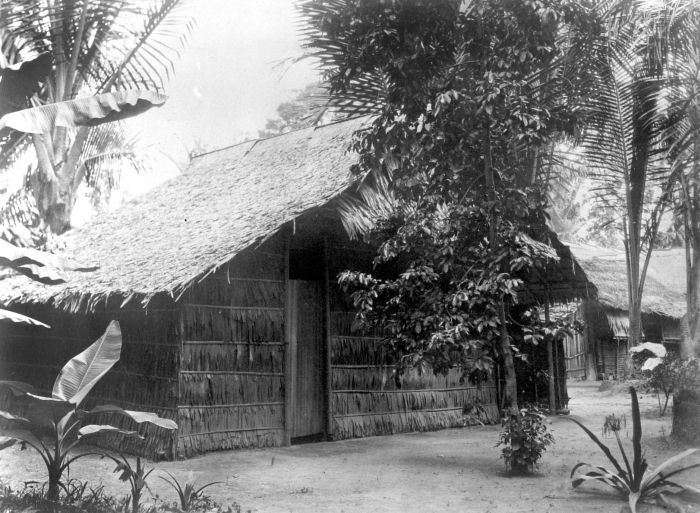|
Thatch
Thatching is the craft of building a roof with dry vegetation such as straw, Phragmites, water reed, Cyperaceae, sedge (''Cladium mariscus''), Juncus, rushes, Calluna, heather, or palm branches, layering the vegetation so as to shed water away from the inner roof. Since the bulk of the vegetation stays dry and is densely packed—trapping air—thatching also functions as roof insulation, insulation. It is a very old roofing method and has been used in both tropical and temperate climates. Thatch is still employed by builders in developing countries, usually with low-cost local vegetation. By contrast, in some developed countries it is the choice of some affluent people who desire a rustic look for their home, would like a more ecologically friendly roof, or who have purchased an originally thatched abode. History Thatching methods have traditionally been passed down from generation to generation and numerous descriptions of the materials and methods used in Europe over the past ... [...More Info...] [...Related Items...] OR: [Wikipedia] [Google] [Baidu] |
Roof Insulation
A roof (: roofs or rooves) is the top covering of a building, including all materials and constructions necessary to support it on the walls of the building or on uprights, providing protection against rain, snow, sunlight, extremes of temperature, and wind. A roof is part of the building envelope. The characteristics of a roof are dependent upon the purpose of the building that it covers, the available roofing materials and the local traditions of construction and wider concepts of architectural design and practice, and may also be governed by local or national legislation. In most countries, a roof protects primarily against rain. A verandah may be roofed with material that protects against sunlight but admits the other elements. The roof of a Conservatory (greenhouse), garden conservatory protects plants from cold, wind, and rain, but admits light. A roof may also provide additional living space, for example, a roof garden. Etymology Old English 'roof, ceiling, top, summ ... [...More Info...] [...Related Items...] OR: [Wikipedia] [Google] [Baidu] |
Nypa Fruticans
''Nypa fruticans'', commonly known as the nipa palm (or simply nipa, from ) or mangrove palm, is a species of palm native to the coastlines and estuarine habitats of the Indian and Pacific Oceans. It is the only palm considered adapted to the mangrove biome. The genus ''Nypa'' and the subfamily Nypoideae are monotypic taxa because this species is their only member. Description Unlike most palms, the nipa palm's trunk grows beneath the ground; only the leaves and flower stalk grow upwards above the surface. The leaves extend up to in height. The flowers are a globular inflorescence of female flowers at the tip with catkin-like red or yellow male flowers on the lower branches. The flower produces woody nuts arranged in a globular cluster up to across on a single stalk. The infructescence can weigh as much as sixty-six pounds (thirty kg). The fruit is globular made of many seed segments, each seed has a fibrous husk covering the endosperm that allows it to float. The sta ... [...More Info...] [...Related Items...] OR: [Wikipedia] [Google] [Baidu] |
Imperata Cylindrica
''Imperata cylindrica'' (commonly known as cogongrass or kunai grass ) is a species of Perennial plant, perennial rhizomatous grass native to tropical and subtropical Asia, Micronesia, Melanesia, Australia, Africa, and Southern Europe. It has also been introduced to Latin America, the Caribbean, and the Southeastern United States. It is a highly flammable pyrophyte, and can spread rapidly by colonizing disturbed areas and encouraging more frequent wildfires. Common names The species is most commonly known in English as "cogongrass" (also "cogon grass"), from Castilian Spanish, Spanish ''cogón'', from the Tagalog language, Tagalog and Visayan languages, Visayan ''kugon''. Other common names in English include kunai grass, blady grass, satintail, spear grass, sword grass, thatch grass, alang-alang, lalang grass, cotton wool grass, kura-kura, and keri, among other names. Taxonomy ''Imperata cylindrica'' was first described by Carl Linnaeus, Linnaeus in 1759 under the basionym ... [...More Info...] [...Related Items...] OR: [Wikipedia] [Google] [Baidu] |
Straw
Straw is an agricultural byproduct consisting of the dry wikt:stalk, stalks of cereal plants after the grain and chaff have been removed. It makes up about half of the crop yield, yield by weight of cereal crops such as barley, oats, rice, rye and wheat. It has a number of different uses, including fuel, livestock bedding and fodder, thatching and basket making. Straw is usually gathered and stored in a straw bale, which is a wikt:bale, bale, or bundle, of straw tightly bound with twine, wire, or string. Straw bales may be square, rectangular, star shaped or round, and can be very large, depending on the type of baler used. Uses Current and historic uses of straw include: Animal feed Straw may be fed as part of the roughage component of the diet to cattle or horses that are on a near maintenance level of energy requirement. It has a low digestible energy and nutrient content (as opposed to hay, which is much more nutritious). The heat generated when microorganisms in a h ... [...More Info...] [...Related Items...] OR: [Wikipedia] [Google] [Baidu] |
Phragmites
''Phragmites'' () is a genus of four species of large perennial plant, perennial reed (plant), reed Poaceae, grasses found in wetlands throughout temperate and tropical regions of the world. Taxonomy The World Checklist of Selected Plant Families, maintained by Kew Garden in London, accepts the following four species: * ''Phragmites australis'' (Antonio José Cavanilles, Cav.) Carl Bernhard von Trinius, Trin. ex Steud. – The cosmopolitan common reed * ''Phragmites japonicus'' Steud. – Japan, Korea, Ryukyu Islands, Russian Far East * ''Phragmites karka'' (Anders Johan Retzius, Retz.) Trin. ex Steud. – tropical Africa, southern Asia, Australia, some Pacific Islands, invasive in New Zealand * ''Phragmites mauritianus'' Kunth – central + southern Africa, Madagascar, Mauritius Wildlife in reed beds ''Phragmites'' stands can provide food and shelter resources for a number of birds, insects, and other animals. Habitat benefits are often optimal when stands are thinner, and ma ... [...More Info...] [...Related Items...] OR: [Wikipedia] [Google] [Baidu] |
Phragmites Australis
''Phragmites australis'', known as the common reed, is a species of flowering plant in the grass family Poaceae. It is a wetland grass that can grow up to tall and has a cosmopolitan distribution worldwide. Description ''Phragmites australis'' commonly forms extensive stands (known as reed beds), which may be as much as or more in extent. Where conditions are suitable it can also spread at or more per year by horizontal runners, which put down roots at regular intervals. It can grow in damp ground, in standing water up to or so deep, or even as a floating mat. The erect stems grow to tall, with the tallest plants growing in areas with hot summers and fertile growing conditions. The leaves are long and broad. The flowers are produced in late summer in a dense, dark purple panicle, about long. Later the numerous long, narrow, sharp pointed spikelets appear greyer due to the growth of long, silky hairs. These eventually help disperse the minute seeds. Taxonomy Recent stu ... [...More Info...] [...Related Items...] OR: [Wikipedia] [Google] [Baidu] |
Cladium Mariscus
''Cladium mariscus'' is a species of flowering plant in the sedge family known by the common names swamp sawgrass, great fen-sedge, saw-sedge or sawtooth sedge. Previously it was known as elk sedge. It is native of temperate Europe and Asia where it grows in base-rich boggy areas and lakesides. It can be up to tall, and has leaves with hard serrated edges. In the past, it was an important material to build thatched roofs; harvesting it was an arduous task due to its sharp edges that can cause deep lacerations. The Worst Rural Jobs in History, Channel 4, 2006 Subspecies *''C. m. californicum'' (S.Watson) Govaerts - California, Arizona, New Mexico, Nevada, Utah, Texas, Sonora, Coahuila *''C. m. intermedium'' Kük. - Australia, New Caledonia *''C. m. jamaicense'' (Crantz) Kük. - Latin America from Mexico to Argentina; West Indies; southeastern United States from Texas to Delaware; naturalized in tropical Africa and on many oceanic islands including Canary Islands, Madagascar, N ... [...More Info...] [...Related Items...] OR: [Wikipedia] [Google] [Baidu] |
Attap Dwelling
An attap dwelling is traditional housing found in the kampongs of Brunei, Indonesia, Malaysia and Singapore. Named after the attap palm, which provides the wattle for the walls, and the leaves with which their roofs are thatched, these dwellings can range from huts to substantial houses. Until the nineteenth century even significant public buildings such as temples were built in this manner. The attap dwelling was used as the inspiration for the natural cross ventilation system for Newton Suites, by WOHA Architects, Singapore. Singapore Attap-roofed houses were formerly common in rural areas of Singapore. From the 1950s onwards, many attap roofs were replaced by zinc sheeting. Public housing and urban renewal Urban renewal (sometimes called urban regeneration in the United Kingdom and urban redevelopment in the United States) is a program of land redevelopment often used to address real or perceived urban decay. Urban renewal involves the clearing ... programmes res ... [...More Info...] [...Related Items...] OR: [Wikipedia] [Google] [Baidu] |
Sugar Cane
Sugarcane or sugar cane is a species of tall, Perennial plant, perennial grass (in the genus ''Saccharum'', tribe Andropogoneae) that is used for sugar Sugar industry, production. The plants are 2–6 m (6–20 ft) tall with stout, jointed, fibrous stalks that are rich in sucrose, which accumulates in the Plant stem, stalk internodes. Sugarcanes belong to the grass family, Poaceae, an economically important flowering plant family that includes maize, wheat, rice, and sorghum, and many forage crops. It is native to New Guinea. Sugarcane was an ancient crop of the Austronesian people, Austronesian and Indigenous people of New Guinea, Papuan people. The best evidence available today points to the New Guinea area as the site of the original domestication of ''Saccharum officinarum''. It was introduced to Polynesia, Island Melanesia, and Madagascar in prehistoric times via Austronesian sailors. It was also introduced by Austronesian sailors to India and then to Southern China by 500 ... [...More Info...] [...Related Items...] OR: [Wikipedia] [Google] [Baidu] |
Arenga Pinnata
''Arenga pinnata'' (syn. ''Arenga saccharifera'') is an economically important feather palm native to tropical Asia, from eastern India east to Malaysia, Indonesia, and the Philippines The Philippines, officially the Republic of the Philippines, is an Archipelagic state, archipelagic country in Southeast Asia. Located in the western Pacific Ocean, it consists of List of islands of the Philippines, 7,641 islands, with a tot ... in the east. Common names include sugar palm, areng palm (also aren palm or arengga palm), black sugar palm, and kaong palm, among other names. Description It is a medium-sized palm, growing to tall, with the trunk remaining covered by the rough old leaf bases. The leaves are long and broad, pinnate, with the pinnae in 1–6 rows, long and broad. The fruit is subglobose, diameter, green maturing black. The palm is remarkable in two ways; first it is fast growing. One at the conservatory of the New York Botanic Garden grew to a height of in ... [...More Info...] [...Related Items...] OR: [Wikipedia] [Google] [Baidu] |
Heteropogon Contortus
''Heteropogon contortus'' is a tropical, perennial tussock grass with a native distribution encompassing Southern Africa, southern Asia, Northern Australia, Oceania, and southwestern North America. The species has also become a naturalised weed in tropical and subtropical regions in the Americas and East Asia. The plant grows to in height and is favoured in most environments by frequent burning. The plants develop characteristic dark seeds with a single long awn at one end and a sharp spike at the other. The awn becomes twisted when dry and straightens when moistened, and in combination with the spike is capable of drilling the seed into the soil. The species is known by many common names, including black speargrass, tanglehead, ''steekgras'' (in Afrikaans) and ''pili'' (in Hawaiian, ultimately from Proto-Austronesian *''pilit''₁ "to adhere/stick"). ''H. contortus'' is a valuable pasture species across much of its range. However, it has also been responsible for the eliminat ... [...More Info...] [...Related Items...] OR: [Wikipedia] [Google] [Baidu] |






